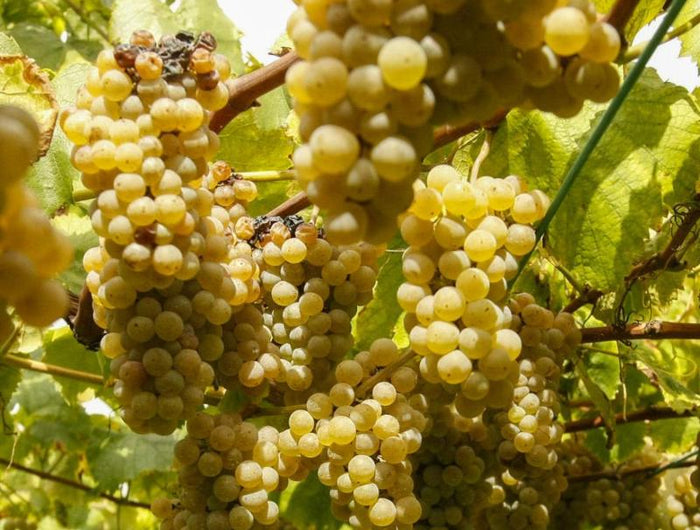

Albariño
The Albariño grape is one of the most emblematic varieties of Galicia, particularly in the Rías Baixas region, where it has achieved international recognition. Its origin, shrouded in mystery and mythology, is attributed to Roman times, although some studies suggest that Benedictine monks may also have played a role in its development during the Middle Ages.
The Rías Baixas Designation of Origin , established in 1988, covers five subzones: Val do Salnés, Condado do Tea, O Rosal, Soutomaior and Ribeira do Ulla. Each subzone brings unique characteristics to Albariño wine, from notes of melon and acidity in Val do Salnés to an earthy touch in Condado do Tea.
Albariño is a white grape and is characterized by its pale yellow color with greenish reflections and an aromatic complexity that includes citrus fruits, peach, apricot and floral touches. On the palate, it stands out for its freshness, vibrant acidity and a slight salinity, which makes it ideal for pairing with seafood and fish.
In recent years, new producers have emerged on the scene, bringing innovation and a fresh perspective to Albariño viticulture. Among them are:
These new producers are not only raising the profile of Albariño, they are also redefining what this wine can be, adding layers of complexity and diversity to the existing offering. Together, they are helping to maintain the rich tradition of Albariño while exploring new frontiers in winemaking.
We want to make sure you enjoy our wines responsibly. Please confirm that you are at least 18 years old to enter Vinnatura. By entering our store, you agree to our Terms of Service .
You are not old enough to visit the store yet.